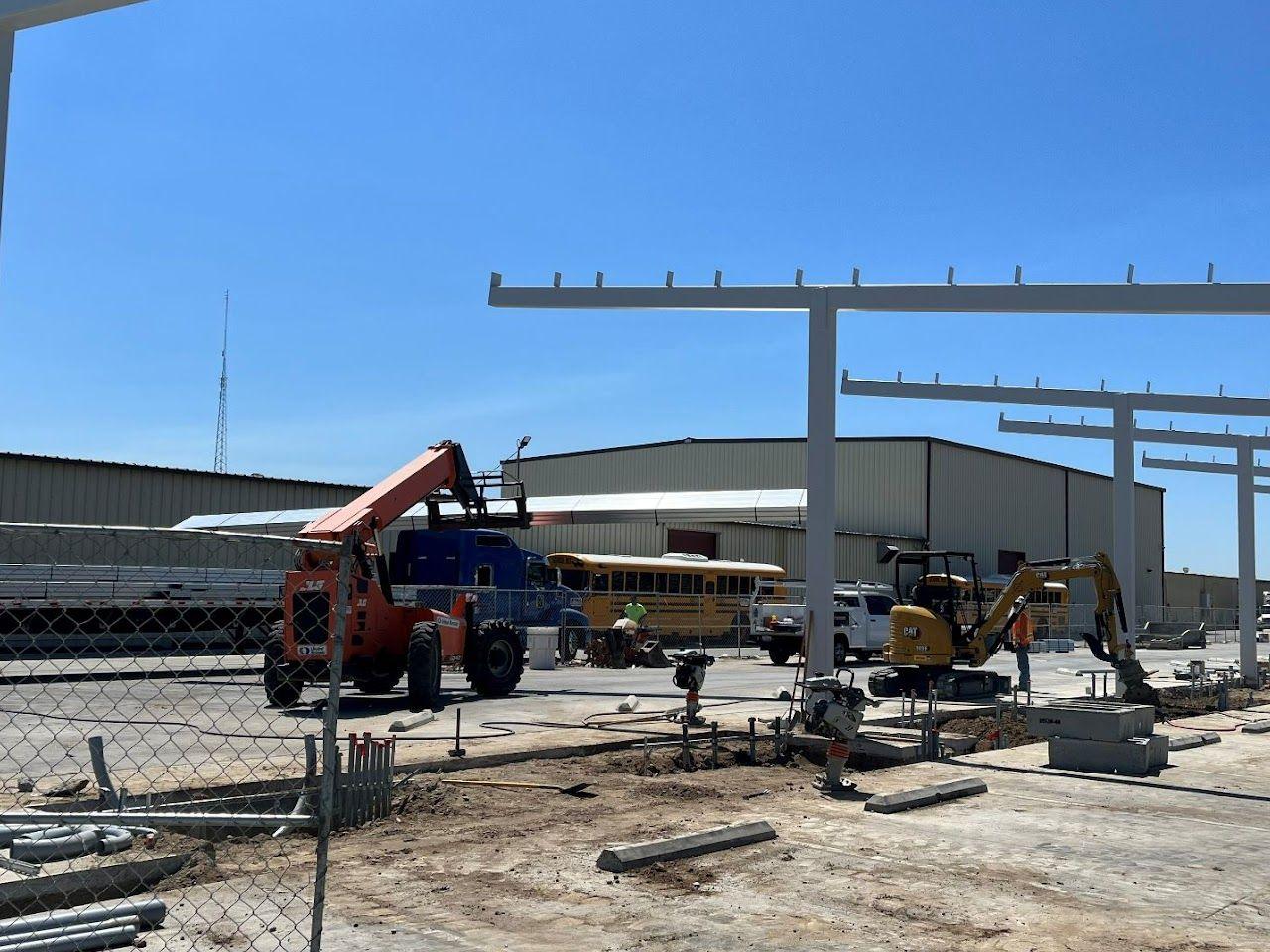Between improved operational efficiency, greater financial savings and a healthier, more sustainable planet, the many benefits of transportation electrification have school districts across the country eyeing electric buses as their next big investment. But, making the switch involves much more than simply buying new buses and retiring the old diesel ones. The first installment of our three-part Road to Electrification series outlined the critical steps involved in planning your fleet electrification project – from connecting with potential partners to calculating your new electricity load. Now, we explore the path of bringing your plan to life during the construction – or build – phase.
Construction basics
Building the infrastructure to support electric buses is undoubtedly a large construction project, particularly if you’re building your charging stations in what used to be a standard bus yard. As a first step, we recommend appointing someone from the district as “project captain” or point person who is in charge of communicating with the general contractor to make sure the district is well represented throughout the project. While much of the construction and building is handled by the contractor and installation partners, it is key for the district to stay as involved as possible. Be in the conversations, ask questions and oversee the execution of the plan to ensure your fleet electrification will be an operational success. With equipment starting to be delivered to the district’s property, arrangements for where it can be stored will also need to be made. You may even need a temporary parking plan for your buses if the normal parking lot is being torn up (assuming you’ve secured the proper permitting and called 811 during the planning phase).
Pro tip: Document the construction process and project milestones to use as public relations campaigns for the district.
Developing charging and charge management infrastructure
During the planning phase, you’ve identified how many and what type of chargers are needed to support your energy load, now it’s time to install them. If you’ve followed the best practices discussed in the first part of this series, you’ve also planned for infrastructure that can support additional energy demands should you add more electric buses to your fleet in the future so that you don’t have to tear up the concrete more than once. Since locally-controlled charge management is essential to the charging ecosystem, you’ll also be putting in infrastructure for this at the same time as the chargers. For instance, laying the correct conduits to hardwire The Mobility House’s local ChargePilot® controller into the chargers.
Testing and commissioning
Once all equipment is in place and wiring is connected, it is critical to test the system to ensure everything is working properly before your contractor walks aways from the job. This is especially important for projects that include vehicles and chargers from multiple manufacturers. For projects with The Mobility House, this is where our experts come in. We’re onsite to run diagnostics and check that the vehicles and chargers are communicating with each other, as well as with our charge management software. Never underestimate the delta between how simple things seem and how complicated they actually are with these types of projects. Also, don’t assume the chargers will always work after install, or vehicles will sync with the charge management. Once testing ensures everything aligns properly, we can then usher through a smooth commissioning.
Charging-as-a-Service
For schools that want to avoid the complexities of directly managing the infrastructure buildout, there is an alternative option. Through The Mobility House’s turnkey charging-as-a-service package, we simplify the process for districts by managing the installation and operation – with the help of our trusted construction and financing partners – of all necessary charging equipment and infrastructure, with no upfront cost. Rather than paying what might be millions of dollars upfront, schools are charged on a per mile driven fee. For example, a $1.7M dollar charging infrastructure investment becomes a <$0.10 fee for each mile driven.
Wheels on the road
Your new electric buses are ready to hit the pavement!
